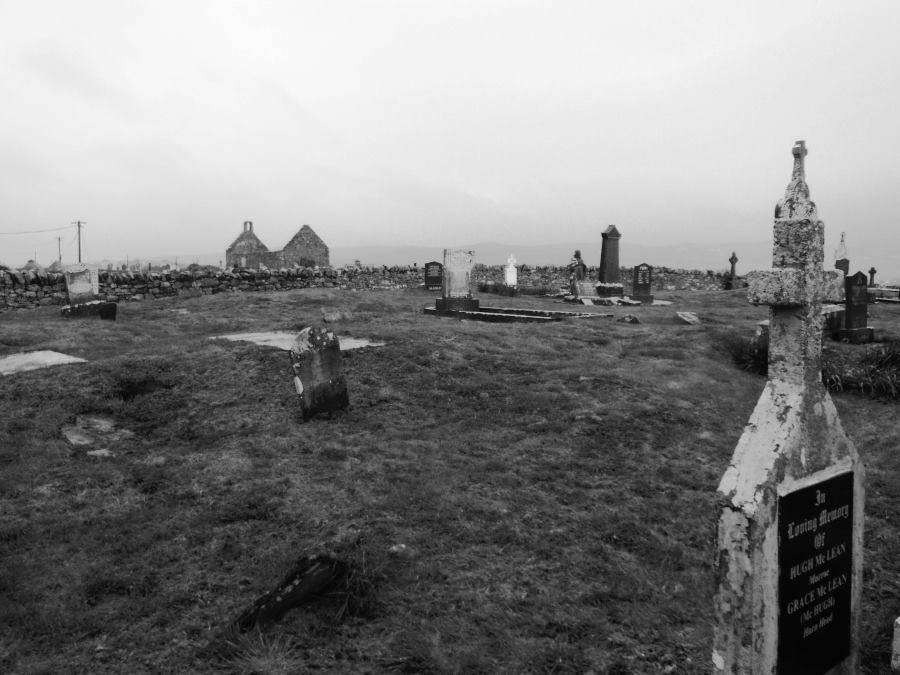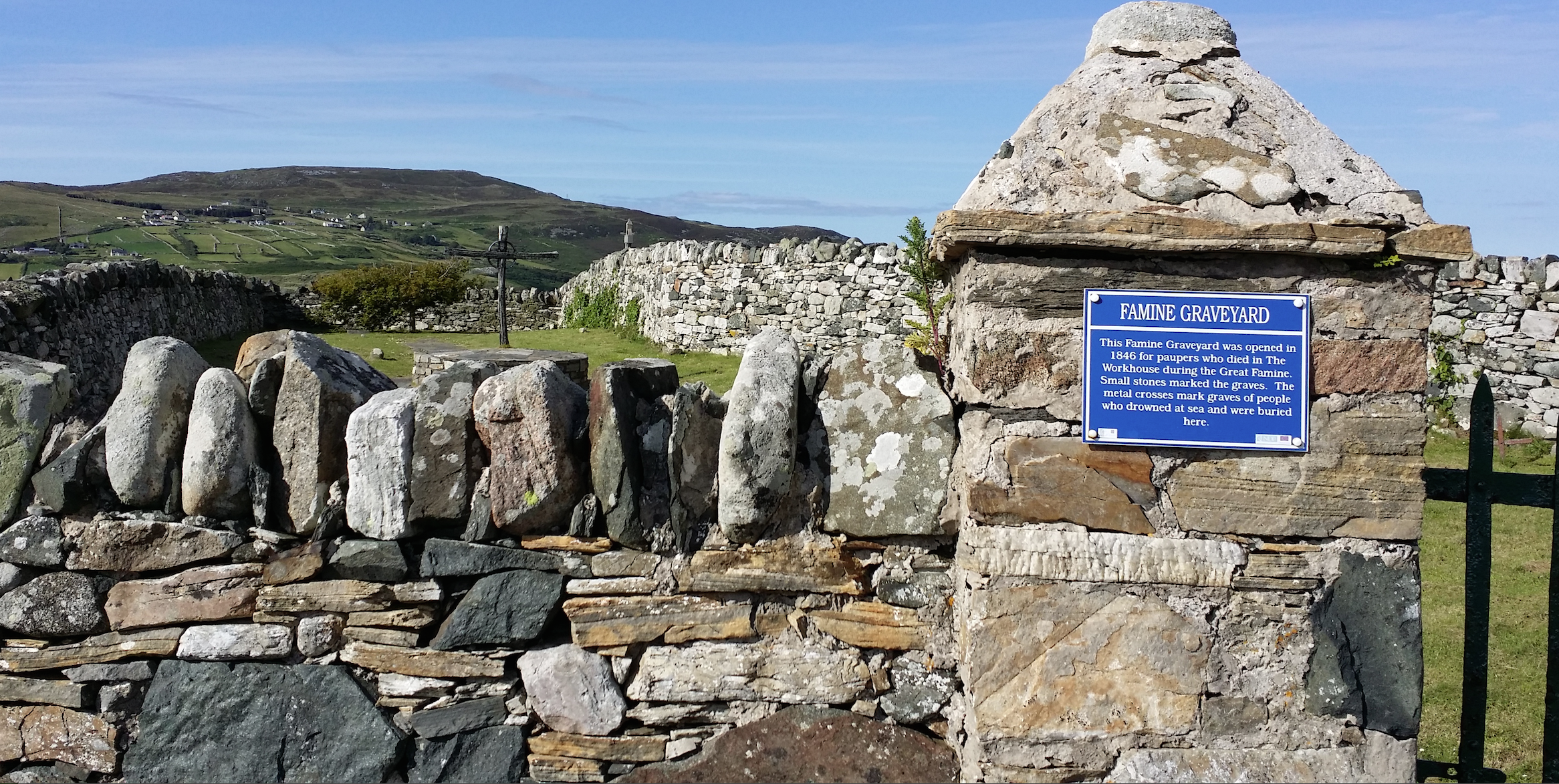The Famine Graveyard in Dunfanaghy is a poignant reminder of one of the darkest chapters in Irish history, the Great Famine (1845-1852). This graveyard, like many others across Ireland, serves as a mass burial site for the victims of the famine, who died from starvation, disease, and malnutrition.
On a plaque outside the graveyard reads: This Famine Graveyard was opened in 1846 for paupers who died in The Workhouse during the Great Famine. Small stones marked the graves. The metal stone crosses mark graves of people who drowned at sea and were buried here.”
Background of the Great Famine
The Great Famine, or An Gorta Mór in Irish, was caused by the failure of the potato crop due to a devastating potato blight (Phytophthora infestans). The potato was the staple food for a large part of the Irish population, especially the rural poor, and the crop’s failure resulted in widespread hunger and death. Approximately one million people perished, and another million emigrated, dramatically changing the demographic and social fabric of Ireland.
Dunfanaghy Workhouse and Famine Graveyard
Dunfanaghy was not spared from the famine’s impact. A workhouse was built in the town in 1845 as part of the Poor Law system, designed to provide relief for the destitute. During the famine years, the workhouses across Ireland were overwhelmed by the number of people seeking aid.
The Dunfanaghy workhouse was a site of immense suffering, as conditions within were harsh, and disease was rampant. As people succumbed to starvation and disease, the dead were often buried in simple, unmarked graves nearby. The Famine Graveyard in Dunfanaghy became the final resting place for many of these victims, including those who perished in the workhouse and surrounding areas. The burials were often done in haste, without proper rites, reflecting the grim circumstances of the time.

An entry to Buildings of Ireland.ie about the graveyard reads:
“It largely contains the unmarked graves of victims of the Great Famine between 1845-1851)who died at Dunfanaghy Union Workhouse which is located a short distance away. It is marked by a simple modern timber cross and a modern memorial stone, and now acts as a moving reminder of this traumatic event in Irish history. Its preservation and maintenance demonstrates the local significance placed on the site, not least in providing a poignant area of reflection. Dunfanaghy Union Workhouse was originally built to standard designs by George Wilkinson at a cost of £4,350 for the buildings and £855 for the fittings. It was designed to accommodate 300 inmates and first admissions took place on the 24th of June 1845. Although designed to accommodate 300, the workhouse was grossly overcrowded during the Famine with outbreaks of dysentery and other fevers common. it is likely that there are hundreds, if not thousands, of individuals interred here. This ‘paupers’ graveyard’ also contains a number of simple iron crosses that mark the graves of ‘strangers drowned at sea.”
The Graveyard Today
The Famine Graveyard in Dunfanaghy remains a solemn and significant site. Today, it serves as a stark memorial to those who lost their lives during the famine. While many of the graves are unmarked, there are often plaques or memorials that have been erected in more recent years to honor the memory of the dead.
The graveyard is a place of quiet reflection, symbolizing the suffering endured during the Great Famine. It is also part of the wider historical and cultural memory of the region, connecting modern-day visitors to a period of immense hardship in Ireland’s past.
In addition to the Famine Graveyard, the nearby Dunfanaghy Workhouse has been preserved and converted into a museum, offering insights into the lives of those who lived through the famine and the conditions in the workhouse. This museum, along with the graveyard, is an important educational and memorial site for both locals and tourists, helping to keep the memory of the Great Famine alive.
The Famine Graveyard in Dunfanaghy, like others throughout Ireland, stands as a solemn reminder of the immense suffering endured during the famine years and the resilience of the Irish people in the face of adversity.

